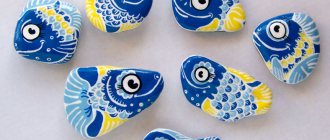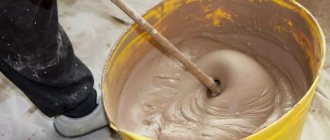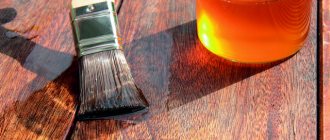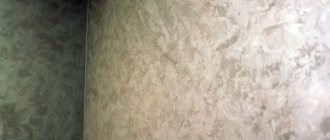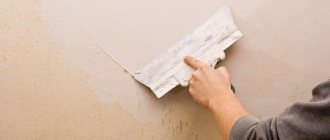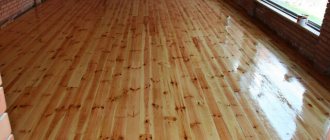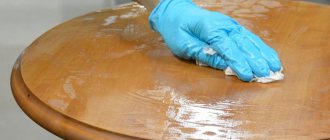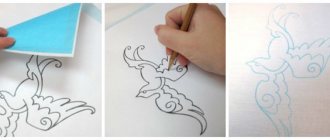Post updated: May 25, 2020
Products made from gold alloys of various grades are used not only as jewelry; parts made from precious metals are also actively used in industry. The use of pure gold in these cases is usually not economically justified; most often, only an external gold coating is required, which gives the element the necessary properties. Surface gilding is one of the main galvanic processes in jewelry, which allows giving the product the required decorative or technical characteristics. How is electroplated gold produced?
Gold plated jewelry
When they hear the word “jewelry,” many fashionistas imagine unremarkable plastic or metal jewelry that carries no value. High-quality costume jewelry cannot be classified as this type of product; even its base is made of cheap material. Craftsmen usually use base metals for the base of jewelry, and to give it an attractive appearance, they apply a beautiful coating using the galvanic method.
Cupronickel, bronze, brass, pewter or nickel silver are used to produce blanks for jewelry. All these alloys differ from each other in color characteristics and properties. Cupronickel is produced by alloying copper, iron, nickel and manganese. The result is an alloy similar in color to silver. Pewter is made from tin, which makes it easy to cast. Nickel silver is an alloy of zinc, nickel and copper, which, depending on the predominant element, acquires a tint of different shades. Bronze and brass contain copper, which makes their color quite attractive.
Craftsmen achieve the golden color and characteristic “precious” shine using electroplating. The base of the decoration does not have to be metal; it can also be a material of a non-metallic nature. During the galvanic process, the product is coated with a layer of gold or silver. In recent years, the rhodium procedure has often been resorted to.
Electroplating with gold provides the decoration with an attractive appearance. Reviews of such products are divided into two parts. Lovers of good jewelry speak positively, arguing that gold-plated jewelry has the effect of a precious metal, but for less money. High-quality coating and painstaking work of an experienced craftsman can bring the most daring design ideas to life. Others have a negative attitude towards products of this kind, since they only recognize precious jewelry.
Pros of spray cans
The paint and varnish market offers a large number of decorative products in gold-tone spray cans with various shades.
Such materials have many advantages:
- The aerosol has a high level of coverage and adhesion.
- Versatility - suitable for bases made of ceramics, glass, wood, metal, plaster.
- Can be applied several layers, dries in a short time.
- Low consumption, while the coating is perfectly smooth.
- You can easily create an antique effect with gold, create a matte and glossy tone, patina.
This coloring agent in cans is used in various repair work. It is used to decorate walls, floors and ceilings, various interior items (chandeliers, figurines, lamps, etc.), wood and glass products, and so on.
Aerosol formulations from Bosnia “KT Gold Effect” are in great demand.
This paint contains the color KT 18. Also, there is an acrylic resin, it gives the paint strength and makes the shade more saturated.
It goes well with different bases; it can also be used to create different interior paintings.
Main advantages:
- Does not lose tone, saturation remains for a long time.
- Resistant to precipitation.
- Does not release toxins.
- Protects against corrosion and oxidation.
- Can be used indoors and outdoors.
- Normal price.
For the best effect, the aerosol must be applied to a primer mixture from the same company.
The manufacturer sells the 5 most popular tones of this gold-colored paint: dark gold, brass, copper, sparkle gold, golden branch.
Brass and dark gold are purchased for decorating interior surfaces; all others are suitable for façade work.
By spraying the mixture, it is easy to cover picture frames, chairs, some armchairs, thus obtaining a design in the old style, antique style, and so on.
Aerosols with chrome effect
Quite often, clients ask for such a gold paintwork material, which can give the effect of chrome with shine.
In this case, the coloring agent Jobi, a manufacturer from the Netherlands, is often recommended. It can paint any type of substrate.
This substance has good properties:
- Easy to apply evenly.
- Versatility - suitable for bases made of glass, metal, fabric, wood, ceramics.
- Not afraid of temperatures up to 110°.
- Gives chrome shine and bright tone.
- High level of hiding power.
- This composition does not form streaks and dries quickly.
- With its help, a durable coating is obtained that does not allow moisture to pass through.
One can of such a paint with a chrome shine can paint about 3 square meters. m of almost any base - suitable for wallpaper, and for plaster, and will lie on the plaster on the ceiling, suitable for the floor.
Often this paint is purchased to obtain products with a chrome sheen (figurines, gifts, souvenirs that you can make yourself).
Methods of applying gold plating
Among the possible options for applying gilding, experts distinguish two methods: mechanical and electrochemical. The mechanical method involves covering the surface with gold leaf. Gilding with the thinnest sheets of metal has been used since ancient times; over many centuries, the essence of the procedure has remained virtually unchanged. Gold leaf plating can be oil-based or glue-based; in the first case, the metal is glued to oil varnish, and in the second, to polyment. The oil-based coating turns out matte; to achieve the effect of a shiny surface, experts resort to using an adhesive base. Work on creating an adhesive coating can be carried out exclusively indoors, since such gilding is characterized by high sensitivity to moisture.
The electrochemical version of surface treatment with precious metal is a galvanic method of applying gold to a product. What it is? During the work, the master applies, using electric current, a thin layer of yellow precious metal, the size of which can reach fractions of microns.
Like any coating, electroplating has its advantages and disadvantages over other options. There are quite a few advantages of coating obtained in this way. These include a high level of wear resistance, excellent reflectivity, high current conductivity, the ability to protect the product from aggressive external factors, the effects of corrosive and oxidative processes. When applying galvanic coating, the specialist carrying out the work can control the thickness of the precious metal layer. Due to the listed properties, galvanic gilding is widely used both in surface decoration and for creating technical parts of devices.
Electrochemical deposition of gold on the surface.
For a long time, the main disadvantage of the method was considered to be the limited scope of its application. The electrochemical method of applying gold to a surface assumes that this surface is conductive, that is, made of metal. Thanks to scientific advances, this problem has now been partially resolved: special technologies make it possible to gild dielectric materials using conductive varnishes and films.
Let's sit down at the computer
What if you need to make a postcard and send it by email? Nothing supernatural. Your equipment has such capabilities, if only it has Adobe Photoshop.
In this program you can get gold color:
- for image;
- for text.
Oddly enough, in order to get any shade, the computer needs only three colors - just like an artist who paints with paints. True, the set of colors is somewhat different. It includes:
- red;
- green;
- blue.
The very process of obtaining the desired shades consists of changing the intensity and relative position in the structure of a particular picture. The gold color in this scheme is not at all unusual.
Turning lead into gold
To feel like an alchemist, find any picture where there is something lead-gray. For example, a car. Open the image in Photoshop.
Important! The GIF format is most suitable for experiments. It is best to take a picture where the background layer is transparent
In this case, the graphic editor can easily determine the contours of the main image. Why is this necessary? Then, in order not to bother with the background, but to work only with the image
It is best to take a picture where the background layer is transparent. In this case, the graphic editor can easily determine the contours of the main image. Why is this necessary? Then, so as not to mess with the background, but work only with the image.
Curves
The tool that allows you to turn lead into gold is called “Curves”. You can find it in the top menu, in the “Image” – “Adjustments” tab.
Important! When you open the tab, a panel will appear in front of you, at the top of which there is a window. By default it is RGB, but you can also set the names of the primary colors
Further:
- Darken the image by moving the curve back a little - you will see the result in the picture.
- Move the curves of red, green and blue colors in turn.
- Take the red curve back, that is, to the top line.
- The curves of blue and green - on the contrary, take them to the bottom line.
- Try different positions of the curves.
Important! Once you have a color close to the desired one, try experimenting with the effects - you will find the corresponding functions in the “Filters” tab
Gold text
Open a picture in Photoshop and add text to it (to do this, find the picture with the letter T in the toolbar). It will be in alphabetic format, but you need a graphical one:
- Select the Rectangular Marquee Tool (rectangular area).
- Right click on the text.
- Select Rasterize Layer.
- And then process the drawing in the same way as in the previous case.
Important! Before rasterizing the text, check it carefully - after such processing, errors cannot be corrected
Gilding technology
Gold plating is a process of depositing a metal film. The thickness of the film can be different; depending on the purpose of gilding, a specialist can apply a layer on the product with a thickness ranging from a fraction of a micron to a fraction of a millimeter. The whole process is divided into three stages: first the surface must be prepared, then a layer of metal is applied and final processing is carried out.
A high-quality coating will only be achieved if the surface to be treated is well prepared. The product is pre-polished mechanically. To do this, use sandpaper, special pastes or grinding machines. Then the surface is degreased in an organic solvent. Alcohol, acetone or gasoline can cope with this task. Another mandatory procedure before galvanic treatment is pickling - removing existing contaminants, oxides and rust from the surface.
Sometimes it is necessary to electroplate only part of a part; for this, the remaining areas of the product must be protected from the effects of electrolyte and gold deposition. To do this, before applying the precious coating, acid-resistant varnish is applied to areas that are not subject to gilding.
The part is plated with gold using galvanic baths. The work is carried out using conductive suspensions and drums made of acid-resistant materials or in bell installations that ensure excellent electrical contact. The galvanic bath must also have an acid-resistant coating so as not to be destroyed under the influence of the electrolyte and equipment in the form of steam jackets. The entire process takes place at high temperature and the required current density, which are supported by automatic regulators. It is almost impossible to carry out galvanic procedures at home, since this requires not only special equipment, but also rare chemical reagents.
Upon completion of the work, the product is coated with a thin metal layer, which provides the best characteristics for the part. For decorative products, it is important to acquire an attractive appearance and the desired shade, for industrial parts - the ability to resist corrosion, improve electrical contact and facilitate the soldering process. Sometimes galvanic coating is used to increase the volume of a product. Depending on what properties need to be imparted to the part, electroplating can be done with both gold and other elements: silver, chromium, nickel.
Care, cleaning and storage of gold-plated items
In order for your jewelry to last as long as possible, you must follow a few simple rules for caring for gold plating.
| Wearing | Be sure to remove gold-plated jewelry before any contact with water (shower, swimming pool, washing dishes) or sports activities. Avoid contact with cosmetics. Don't forget that everyday wear shortens their service life. |
| Storage | Store only in a separate box or fabric bags so as not to damage the layer with other decorations. |
| Cleaning | Clean only with a soft cloth without using abrasives. If dark spots just appear, just wipe with ordinary vinegar and rinse in water. The shine will help return the egg white (after it you will also need to rinse in clean water). Once a year, items should be taken to a jeweler for professional cleaning. |
Despite the fact that sooner or later the coating wears off, it can always be renewed in a jeweler’s workshop.
Gold alloy plating
To coat products, gold alloys are most often used, to which a ligating component is added. An additional element in the alloy allows you to give the part the necessary qualities and the desired shade. In Russia, preference is given to gold with a reddish tint; in the USA and some other countries, priority is given to coatings of lemon yellow or brass shades.
In order for electroplating to have a tint not like gold, but like platinum, the working alloy must consist of gold and nickel, the percentage of which must be at least 8-10%. This coating will have a white tint and will also be highly hard compared to a pure gold layer. The higher the proportion of nickel in the alloy, the higher the hardness and wear resistance of the final surface will be. Electroplating based on gold and nickel is used abroad for jewelry. Due to their high resistance to corrosion processes, they can also be used for technical purposes.
An alloy of gold and copper is used in Russia to coat elements of wristwatches. The progress of the process depends on the concentration of free cyanide in the electrolyte: the higher the concentration of the substance in the electrolyte, the lower the copper content in the resulting coating. When the process is carried out under conditions of neutral electrolytes, a copper-gold coating with a thickness of 20 microns can be obtained.
In addition to the listed alloys, gold-silver and gold-antimony compositions are also used. The percentage of elements in the final coating depends on the characteristics of the electrolyte and the chemical reagents used.
Gold-antimony electroplating has earned positive reviews for its use in gilding eyeglass frames. A coating of this composition is characterized not only by increased wear resistance, but also by an attractive appearance. Depending on the thickness, it can turn out semi-shiny or shiny. Such properties, together with a high level of resistance to mechanical stress, allow the alloy to be used for decorative purposes.
Conclusion
By watching the video in this article, you can get more detailed information about what types of gold paints there are and what properties they may have. Also, based on the article presented above, it is worth concluding that the scope of application of these materials is very limited, which is often associated not only with color, but also with technical characteristics (also find out how to paint a toilet in an apartment).
Similar articles
- Textured facade paint: video instructions for painting with your own hands, photo 1 Properties and varieties 1.1 Characteristics 1.2 Features of application 2 Conclusion Finishing the facade of a house is a very responsible and important…
- Painting metal: instructions on how to paint correctly with your own hands, which paint is better, video and photos
1 How to paint metal 1.1 Alkyd and oil paint for metal 2 Choosing paint for metal 3 How to paint metal correctly 3.1… - Glossy paint for walls and ceilings: do-it-yourself instructions for use, video and photos
1 All about gloss 1.1 Why this option 1.2 Types of paints 1.3 What to look for when buying 1.4 What can be painted 2 Conclusion For anyone...
What metals can be gilded
Jewelers quite often use gold plating for silver items. Bronze, copper, cast iron, brass, aluminum, galvanized iron and other well-known metals can also be coated with gold. Certain industries practice gilding of wooden, clay, plastic, and plaster objects. A gold layer can be added to ceramics and cardboard.
Gilding decoration
Artistic acrylic paint
If you need to paint a wooden surface, you should use inexpensive OLKI artistic paint. The manufacturer positions the dry powder composition as natural gold leaf - and this is confirmed by consumers who work with artistic wood painting. Distinctive features:
- the powder is diluted with water;
- the paint is easy to apply;
- has good hiding power;
- creates a hard, stable layer on the surface;
- comes in light gold and dark brown;
- dries quickly, emphasizes the texture of the surface;
- It's inexpensive.
OLKI paint is also used for artistic painting of icon cases and icons. It is suitable for effectively painting a wooden frame of a picture or mirror, or restoring furniture.
Features of car painting
When using paint with a hammer effect for this purpose, you will need to prepare:
- Short-pile fur paint roller.
- A brush for applying paint.
- Solvent for diluting the composition. Typically Nos. 646-648 are used for this purpose.
- Abrasive for surface cleaning.
- Primer for paint.
In addition, you need to prepare the paint, diluted to the desired degree of thickness. It will thicken quickly. Therefore, it is necessary to complete the work as quickly as possible.
How to quickly age bronze?
Take 20-25 grams of ammonium sulphide per liter of water. The products are heated and hot immersed in the solution or, if the products are large, the solution is applied with a brush. The intensity of the tone depends on the heating temperature of the product: the higher it is, the darker the brown tone of the coating.
Interesting materials:
What resin is needed for creativity? What soda goes with Aperol? What kind of soda is in Aperol? What salt is best to use? Which salt is better: table salt or iodized salt? Which salt is healthier and better? What kind of certificate is needed to go to the pool? Which steel is better for a drill? What is the standard tabletop length? What is the standard sofa seat depth?
What is remarkable about blacksmith's paints?
Since painting allows you to obtain interesting surfaces with different effects, it is used to decorate exteriors - gates, window bars, entrance doors and panels, bas-reliefs, fences (including painting fences in a cemetery). With the help of blacksmith's gold paints, it is possible to obtain an unusual surface with shiny chrome, artistic painting, or artificially age the metal.
Hammer compounds are very popular, which give the metal texture the appearance of dents and relief left by a forging hammer.
The use of several blacksmith's paints allows you to achieve a stunning effect of brown patina, and there are more than fifty options for such imitation. Even an inexpensive metal surface can be given a luxurious look and architectural appeal. In addition, forge paints significantly extend the service life of the metal and additionally protect it from moisture and corrosion.
Using dry acrylic, aerosol and enamel paints, you can introduce very bold and interesting design ideas, obtain incredibly beautiful unique surfaces, and add originality and chic to the interior. The only rule to follow is that there should not be too much gold. Only neat, no-frills gold accents will look appropriate and beautiful.
Some tips
When using hammer paint, it is recommended to take the following into account:
When painting vertical parts, it is recommended to use a spray gun. In this case, it will be easier to avoid the formation of paint runs. Painting should not be carried out where there is high humidity or temperature. The applied coating will have poor adhesion
If painting is done indoors, it is important to provide ventilation during work. When painting new products, it is important to completely remove traces of factory grease and contamination before starting work.
A metal fence coated with hammer paint will be more durableSource remoo.ru
Carefully applied paint will serve the owner for many years.
